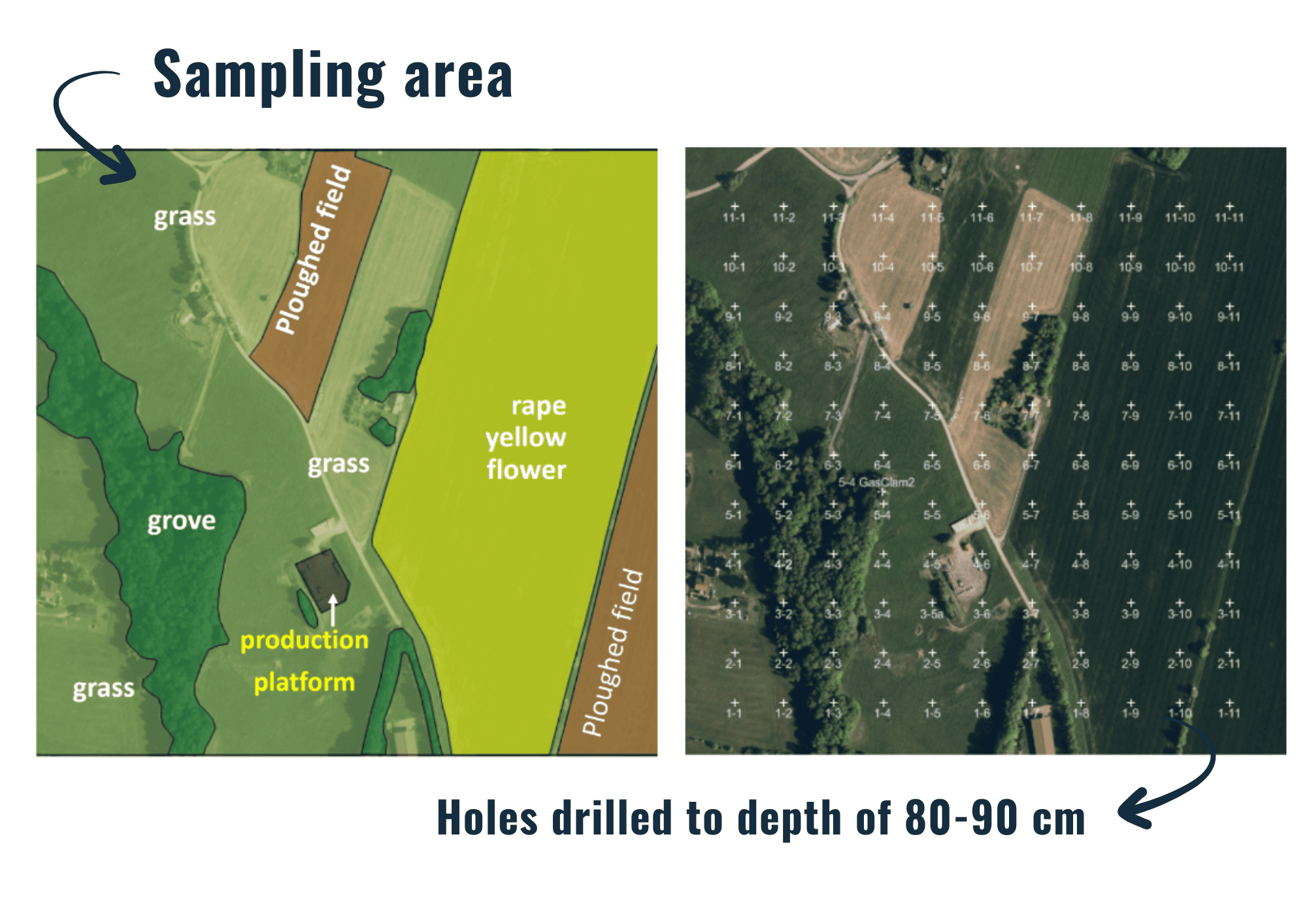
Introduction
Before we can safely store CO₂ underground, we first need to understand what’s already happening in the soil: how gases naturally move, and how biological and weather processes change their composition. That’s what COREu is studying in eastern Czechia, in the Carpathian Foredeep Basin, an area with long-standing oil and gas production and therefore a good candidate for future CO₂ storage.
According to the EU Directive 2009/31/EC and the Czech Act No. 85/2012 Sb., every CO₂ storage site must be monitored carefully:
- before CO₂ injection (baseline monitoring),
- during site operation, and
- after the site has been closed.
The goal is to ensure that the injected CO₂ stays underground and does not escape into the atmosphere. To detect any future leaks, we first need to know the natural background levels of gases in the soil and how they fluctuate through the seasons. This so-called baseline also helps distinguish between natural processes (like plant respiration or microbial activity) and potential effects caused by stored CO₂.
Methodology
The monitoring area covers both agricultural land and natural surfaces. Shallow holes are drilled into the soil, about 80–90 cm deep.
The concentrations of hydrocarbons and CO₂ are measured using portable infrared detectors. These measurements are complemented by clay samples, because clay acts as a natural sorbent. It can trap gases and volatile organic compounds.
In the laboratory, these samples area analyzed using gas chromatography (GC) and headspace analysis to detect tiny amounts of hydrocarbons and other volatiles that are adsorbed on mineral surfaces. Together, these methods provide a detailed picture of the soil’s chemical activity near the surface.
Results
• Most parts of the area are well aerated, but where the ground is sealed (such as under buildings or paved surfaces) oxygen can no longer reach the soil below
• CO₂ levels are highest in wet soils, where oxygen is lowest. This is the result of microbial processes: special microorganisms known as methanotrophic archaea consume methane and convert it into CO₂.
• Some gases are naturally trapped by clay minerals. The low methane concentrations and their distribution indicate only minor upward migration from deeper layers (however, the quantities are extremely small)
• Seasonal and meteorological effects are very strong. Continuous measurements show that:
- In winter, both CO₂ and methane are at their lowest.
- In spring, CO₂ rises sharply.
- In summer, both gases reach their maximum.
- In autumn, both decrease again.
These changes are linked to temperature, soil humidity, and air pressure. Lower atmospheric pressure allows gases to escape more easily; higher pressure pushes air back into the soil. Warm and moist conditions boost biological activity and plant respiration, producing more CO₂.
What It Means for CCS
This work demonstrates that soil gas composition is strongly influenced by weather, vegetation, and microbial life. Therefore, it’s essential to establish a detailed baseline before CO₂ injection begins. Otherwise, natural seasonal effects could be mistaken for leaks. The data also show that the geological seal and well integrity in the former gas field are still effective, as only minimal hydrocarbon anomalies are detected. Interestingly, traces of microbial methane generation create small “methanotrophic gardens” below the surface, where microbes continuously produce and consume methane. This is a sign of a dynamic but stable subsurface ecosystem.
This research lays the groundwork for safe and reliable CO₂ storage in the Czech Republic and beyond. By learning how the soil “breathes,” how microbes transform gases, and how natural conditions affect the system, we can confidently distinguish between natural background changes and real leakage signals. It’s a crucial step toward building trust in CO₂ storage as a secure technology for the future.
Authors
The above research findings were presented at IMOG 2025 by J. Francu, P. Jirman, D. Ocásková, P. Pařízek, B. Janíková, and P. Iakunina from the Czech Geological Survey, along with P. Merta from UNIGEO a.s..



